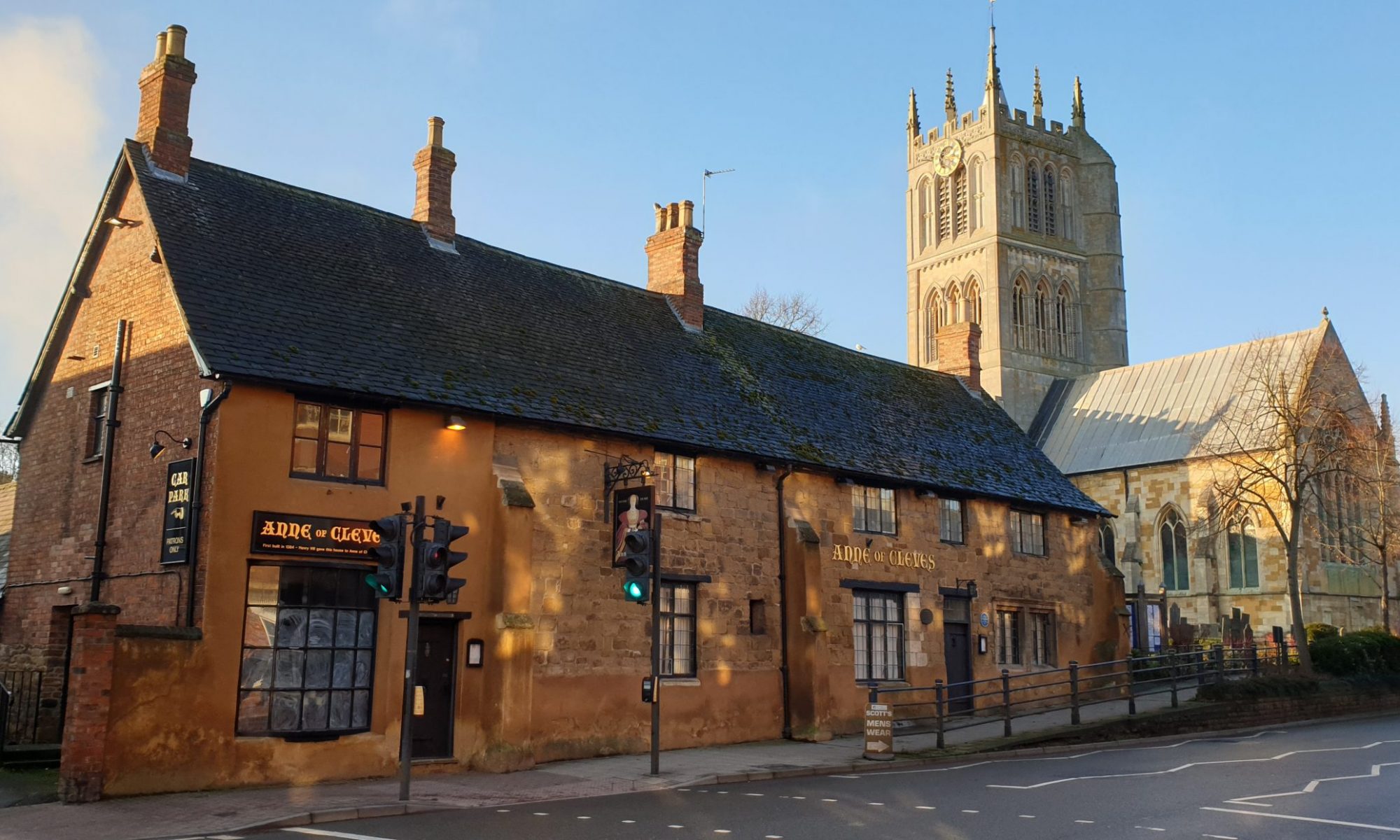One of Meltons’ claim to fame during World War 2 was the despatch of a famous war veteran to Australia in the form of a Lancaster bomber known as G for George.
Avro Lancaster Mk.I serial number W4783 AR-G (for George), operated by No. 460 Squadron Royal Australian Air Force (RAAF). The aircraft flew 90 combat missions over occupied Europe with 460 Squadron, and is the second most prolific surviving Lancaster, behind R5868 S for Sugar which flew 137 sorties with No. 83 Squadron RAF, No. 463 Squadron RAAF and No. 467 Squadron RAAF.
The aircraft was built to contract B.69275/40 by Metropolitan-Vickers Ltd. at Trafford Park, Manchester and was taken on charge by No. 460 Squadron on 22nd October 1942 and allocated to A Flight as ‘G for George’ at RAF Breighton in Yorkshire.
The first operational sortie for ‘George’ was on the 6th Dec 1942 when 10 aircraft from 460 Sqn took part in the raid on Mannheim. George took off from RAF Breighton at 17:23Hrs with a bomb load of 1 x 4,000lb bomb and 10 Small Bomb Containers, each loaded with 236 x 4lb Incendiary bombs. The bombs were dropped over the target at 20:18Hrs and returned to base at 23:58Hrs.
George took part in ‘minor ops’ on the night of 17th/18th December 42 when 27 Lancasters from No 5 Group were sent on raids to 8 small German towns and a further 50 aircraft were tasked with ‘Gardening’ Ops laying mines from Denmark to Southern Biscay. George was one of the aircraft on Gardening Ops.
The aircraft took off from Breighton at 16:50Hrs with 1 x PIM8 mine and 5 x B200 mines. Due to 10/10 low cloud and sea fog rising to 800 feet, the mines were brought back to base with the pilot reporting the operation as a ‘waste of time’. George suffered damage from anti aircraft flak resulting in hole 8″ in diameter being made in the starboard wing. The damage was categorised as Cat.Ac/FB with the repair being beyond the unit capacity, but was repaired on site at Breighton by another unit or a contractor).
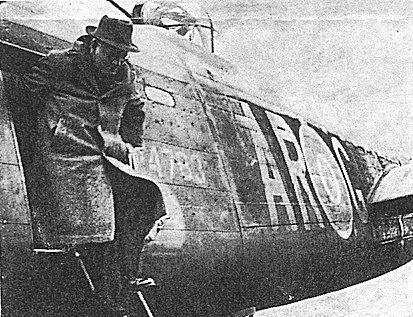
On 14th April 1943, George was part of a force of 208 Lancasters and 3 Halifaxes bombing the docks area of La Spezia in Italy. During this raid, George again received damage which was categorised as Cat.A/FB. This time, though, it wasn’t a result of enemy action, but the cockpit windscreen was shattered, possibly after being hit by falling bombs from above. The entry in the Sqn Operational Record Book states “The windscreen was shattered by below average bombing partly due to fog”. Again it was repaired on site and moved with 460 Squadron to Binbrook on 14th May 1943.
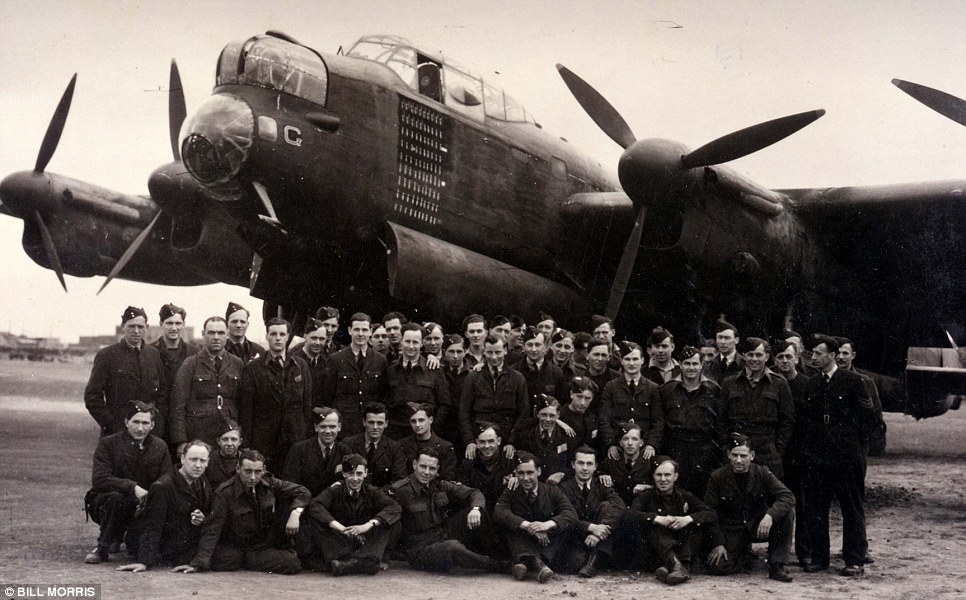
(Source: http://www.dailymail.co.uk/news/article-2119392/A-modern-day-mission-Lancaster-bomber-crew-preparesaction-70-years-remarkable-set-airfield-pictures.html)
The last operation for ‘George’ was against Cologne on the 20th April 1944. During it’s sixteen months operational service, ‘George’ carried out some 90 bombing operations against Germany, Italy and occupied Europe. ‘George’ was damaged over twenty times by enemy action and once by friendly forces. It has the added distinction of bringing home, alive, every crewman who flew aboard it. This is a surprising feat considering the aircrafts history.

The senior fitter, Flt Sgt Tickle kept a diary of ‘George’s’ active service record. One of the most exciting entries was dated 22nd October 1943, when the Lancaster, which was on its 67th trip, carried a heavy load of bombs to Kassel with Flt Sgt W. A. Watson, of Clarence River (NSW), as pilot and ran into a violent electrical storm.
‘George’ survived another severe test on the night of 16th June 1943, when over Cologne it collected 17 flak holes in the wings, tailplane. fuselage, and midupper turret. The propellers and under–carriage had also sustained some damage too. The Lancaster on 6th September 1943, came home on three engines. ‘George’ also made many trips to Italy. The pilot: on the 90th and last war flight was Flying-Officer J. A. Critchley, of Brighton (Vic).
On the night of the 31st August 1943, ‘George’ was just one of 21 aircraft from 460 Sqn detailed to attack Berlin. the main bomber force they were part of consisted of 622 aircraft: 331 Lancasters, 176 Halifaxes, 106 Stirlings and 9 Mosquitoes. it was during this sortie that ‘George’ suffered ‘friendly fire’ damage when incendiary bombs dropped from an aircraft above ‘George’ put a hole in it’s tail.
Ninety small bombs painted on the side of the drab-coloured fuselage of “G for George” illustrates the proud record of many battles this plane has fought over enemy territory.
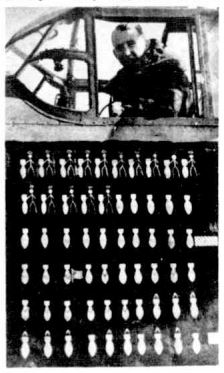
Before leaving England, men of the RAAF decided that ‘George’ deserved more than his 90 bombs’ painted on the fuselage for 90 missions, so they awarded ‘George’ the DSO, the DFM and the Conspicuous Gallantry Medal which are an affectionate tribute paid to ‘George’ by men who remember the bomber as the luckiest and the staunchest they have ever flown and the best they have ever serviced.
Among 200 men who spent between them 664 hours and five minutes of operational flying in ‘George’ ‘many have been decorated or promoted.
On 29th May 1944 the Sqn ORB recorded that ‘George’ was despatched to Waddington prior to despatch to Australia.
HQ No 44 Group issued a special Air Movement Order to RAF Melton Mowbray on the 25th September 1944 headed “Lancaster MkI W4783 to be flight delivered to Australia, Special Commitment”.
The Air Movement Order provided details about what preparation was required to enable George to fly down under: Weight – 52,260lbs Height – 10,000ft IAS – 170-160mph Boost – +4lbs/sq in AMPG (Air Miles per Gallon) – 1.15 statute miles
The aircraft was prepared for the journey by No 4 Aircraft Preparation Unit whilst the training of the specially selected crew and despatch of the aircraft would be undertaken by No 304 Ferry Training Unit. Note that both of these units were amalgamated on the 9th October 1944 and became No 12 Ferry Unit.
The crew members were specially selected for ferrying ‘George’ to Australia and were all tour-expired members of the RAAF being transferred from operational squadrons. They arrived at RAF Melton Mowbray on the 30th September and were: Pilot – A/Sqn Ldr E A Hudson DFC and Bar 2nd Pilot – Fg Off F P Smith DFC Navigator – Fg Off W C Gordon DFC Bomb Aimer – Fg Off T V McCarthy DFC Wireless Operator – Fg Off C H Tindale DFM Air Gunner – Fg Off G B Young DFM Senior Fitter – Flt Sgt H Tickle MID Fitter – Sgt K A Ower
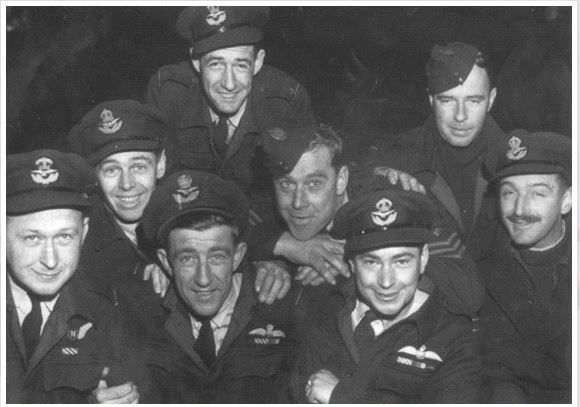
Awards gained by members of the crew include two DFC’s, two DFC’s and Bars, two DFM’s and one mentioned in dispatches.
Sqn Ldr Hudson, who comes from Rockhampton, Queensland, participated in attacks against most heavily defended targets, such as Hamburg, Kiel, Cologne, Dulsburg and Rostock. He is noted for pressing home at tacks from low level.
Flt Lt F. P. O. Smith, of Newcastle (NSW), the second pilot, won the DFC for courage and skill in securing many fine photographs, particularly one of Turin in July, 1943.
Fg Off W. C. Gordon, of Raleigh (NSW), the navigator, gained the DFC for nursing the plane to the target and back to base after the compass, the airspeed indicator and radio had been put out of action.
Fg Off T. V. McCarthy, DFC and Bar, the air bomber, from Mossvale (NSW) is one of the most experienced Australian Air Force bomb-aimers. He had done 13 trips to Berlin.
Fg Off C. H. Tindale, DFM, the radio operator and air-gunner, of Cremorne (NSW) improvised the inter-communication system after it had been put out of action during a flight to Berlin.
Fg Off G.B. Young, DFM, airgunner, of Matraville (NSW) received his award for extinguishing a fire in the plane on his first operational flight.
Flt Sgt H. Tickle, of Adelaide, has been mentioned in dispatches. Tickle, from the time “G for George” began operations in December 1942. has been in charge of the maintenance flight which did the Lancaster’s repairs.
Sgt K. A. Ower, fitter, from Telamon (NSW) had long service with the Australian Air Force Coastal Command squadron before he was posted to the Lancaster squadron. Ower has a grand record as a member of the ground staff.
Standard training for new ferry crews usually took around ten days and included subjects such as long range flying, dinghy and parachute drills, compass and direction finding, navigation exercises, using the sextant and astro-compass, auxiliary fuel systems and petrol consumption. In addition tot he usual training, they were given instruction on the use of the radio range receiver that was being installed for the journey.
In October 1944 it was transferred to the RAAF and re-serialled ‘A66-2’. On the 6th October, ‘George’ and her all Australian crew left Melton Mowbray for RAF Prestwick in Scotland on the first leg of the journey.
On 11th October 1944 it departed Prestwick and commenced the long flight to Australia. A message before take-off was received from H.R.H The Duke of Gloucester, the Governor General Designate of Australia, who sent a good-will message wishing them a safe voyage and hoping that George would be joined by many Australia-built Lancasters.
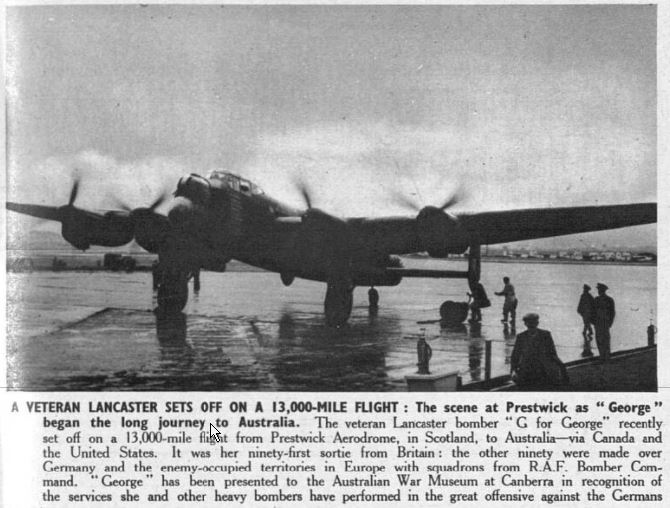
The journey would take them from Prestwick via Reykjavík in Iceland; Goose Bay – Labrador, Canada; Dorval – Montreal, Canada; San Francisco – USA, Honolulu, Suva – Fiji and onto Brisbane. Whilst at San Francisco George had a problem with the radio transmitter which delayed the aircraft until it was repaired. After leaving San Francisco, the automatic pilot went and it was reported that one of the crew said “It is time the pilots did a bit of work.”
The aircraft experienced more trouble when it landed at the Royal New Zealand Air Force base at Suva in Fiji when the radio receiver went unservicable
George finally arrived at RAAF Station Amberley, to the west of Brisbane at 11:32am on the 8th November 1944.
The aircraft was required for a tour in the south, as part of campaign to raise war bonds but a request by the father of the pilot, Mr. S.G. Hudson of Rockhampton was first granted and after taking off on the 10th and circling Brisbane, ‘George’ landed at Rockhampton at 3 p.m. after twice circling that town. The crowd cheered as the aircraft’s captain stepped out to be greeted by his father and family from whom he had been parted for over four years.
It was still touring in April 1945 when it visited Rockhampton again in company with Beaufort A9-580 in connection with the 3rd Victory Loan.
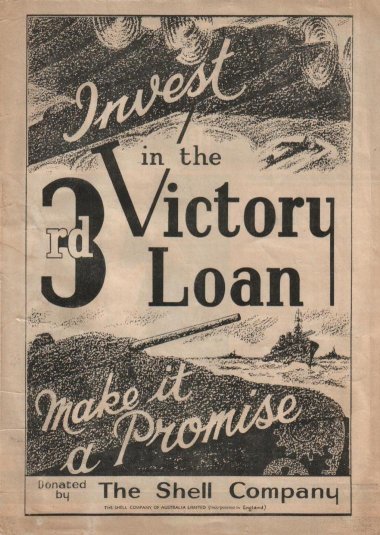
The ‘3rd Victory Loan’ tour in which ‘George’ took part, ran from 13th March to 27th April 1945. On 6th April 1945, ‘George’ flew in formation over Brisbane with nine Beaufighters of 93 Squadron, six Liberators, nine Mustangs, three Kittyhawks, and one Boston as part of the “Victory Loan” campaign. 93 Squadron had earned the nickname the “Victory Loan” Squadron buy raising over 8,000 Pounds towards the Victory Loan fund.
In July 1945 it was flown into outside storage at RAAF Fairbairn, Canberra. In the early 1950’s a decision was made to preserve the aircraft and work commenced to prepare it for display. It is still housed at Canberra A.W.M. where it can be seen today.
In 2003, G-George returned to display at the AWM in the new ANZAC Hall after a five year restoration program, which restored the aircraft as faithfully as possible to its wartime configuration. It is displayed in conjunction with a sound and light show that attempts to convey something of the atmosphere of a World War II Bomber Command raid, and incorporates a German ’88’ flak gun and a Bf-109 fighter. The display is based on a sortie captained by Flying Officer “Cherry” Carter to Berlin on “Black Thursday” December 1943, so called because Bomber Command lost 50 of the 500 bombers detailed for the raid – more than half were lost in landing accidents due to bad weather.
No 460 Squadron flew the highest number of Lancaster sorties in Bomber Command, but also suffered the highest loss rate of any Lancaster unit in No. 1 Group. Quite rightly, ‘George’ serves as a memorial to all Australians who flew with Bomber Command, and to the 1,018 dead of 460 Squadron.
Extract from the RAF Melton Mowbray ORB from Oct 44 which states:
“There were two bright spots – we finally liquidated the arrears on commitments No’s 91 & 166 and we successfully despatched the special commitment of one Lancaster to Australia. This aircraft has been much photographed at various stations throughout the world, but was prepared and the crew trained for this overseas flight and despatched secretly from this station.”

For more information on RAF Melton Mowbray and its role in ferrying aircraft across the world during WW2, see my previous blog: 15 – RAF Melton Mowbray
